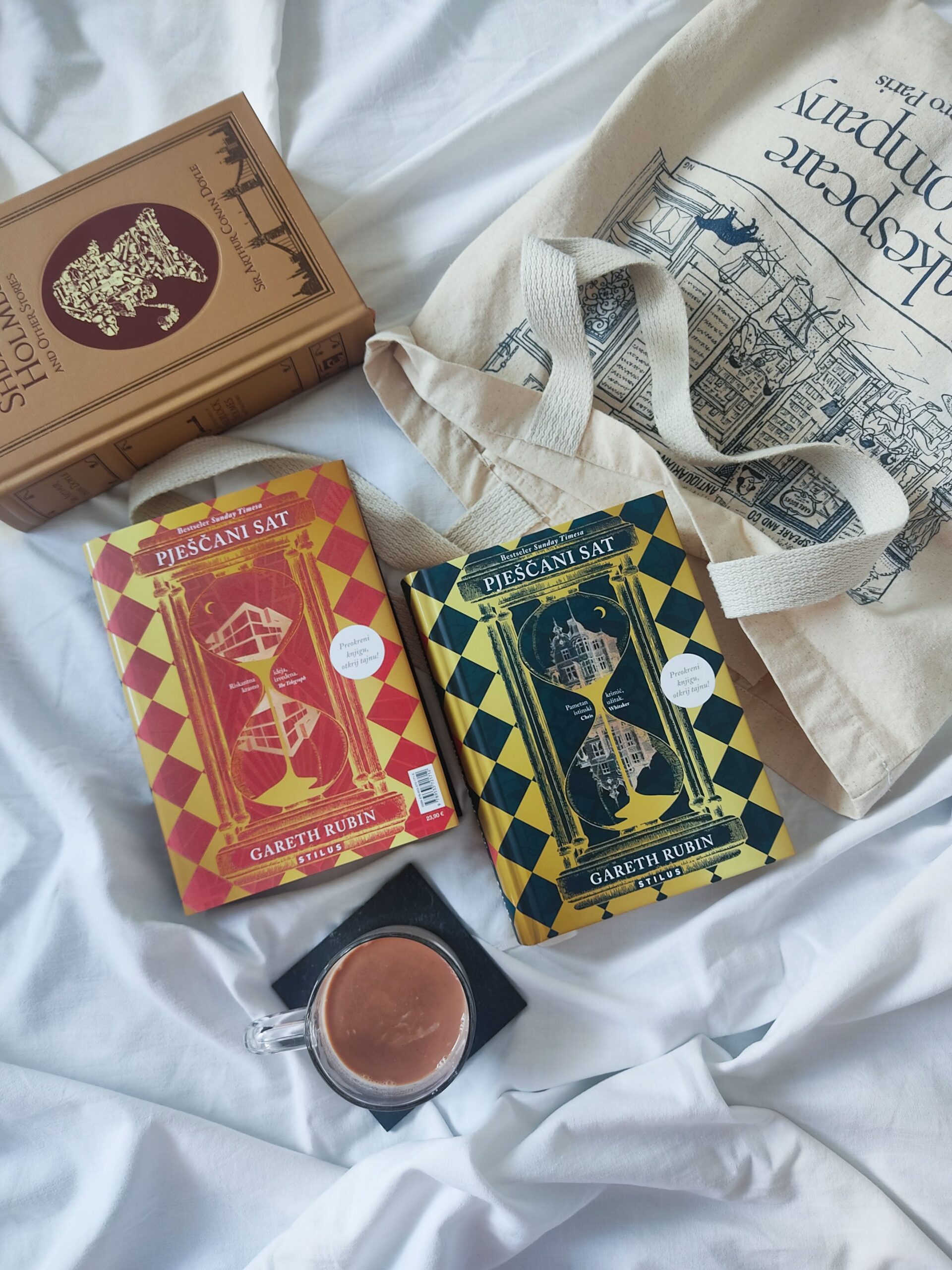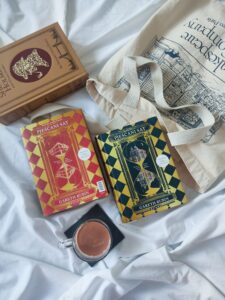
“It was the wrong house for the Tooke family. It was see-through, allowing everyone to look in, while the people who lived there did their best to hide their lives away.”
Jedna knjiga. Dvije naslovnice. Dvije priče.
- Viktorijanska Engleska i mladi liječnik Simeon Lee koji stiže iz Londona na obalu Essexa kako bi liječio svojeg rođaka, svećenika Olivera Hawesa. Čitajući svećenikov tête-bêche dnevnik Simeon otkriva obiteljske tajne…
- Ken Kourian istražuje smrt prijatelja Olivera Tookea, pisca i sina kalifornijskoga guvernera koji je pronađen mrtav. Njegovu smrt policija tretira kao samoubojstvo. Uz pomoć Oliverovog posljednjeg djela – tête-bêche romana o mladom liječniku Simeonu Leeju Ken otkriva obiteljske tajne…
Jeste li ikada čuli za tête-bêche? Pretpostavljam da kao ni ja niste, a ideja je odlična! U osamnaestom stoljeću izdavači su često tiskali dvije knjige u jednoj. Kada dovršite jednu samo preokrenete knjigu i počnete čitati s druge strane.
U Pješčanom satu pisanom u ovoj formi susrećemo se sa pričama koje se obje baziraju na takvim romanima i čiju pravu istinu doznajemo čitajući ga s druge strane, promatrajući izvrnutu istinu.
Meni se jako svidjela ova forma. Obožavam naizgled odvojene priče koje se isprepliću i na kraju tvore cjelinu. Jedva sam čekala otkriti što se zbiva na drugoj strani romana, a i malo me podsjetila na djetinjstvo i knjige u kojima ste sami birali tijek radnje (iako je ovo potpuno drugačije).
Stil pisanja je zanimljiv, nešto sporijeg tempa, pogotovo u Viktorijanskoj priči, ali opisi ulica, mirisa i ostalih detalja su toliko živopisni da se u tren preselite u 1881. i 1939. Idealna je za ljubitelje britanskih krimića sa daškom Sherlocka Holmesa.
Ovaj “clever crime fiction” na kraju mi je ostavio osjećaj da i dalje nisam pohvatala sve detalje i da se još svašta skriva na stranicama Pješčanog sata. Definitivno zaslužuje bar jedno ponovno čitanje u budućnosti.
[english]
 The Turnglass – Gareth Rubin
The Turnglass – Gareth Rubin
One book. Two covers. Two stories.
- Victorian England and the young doctor Simeon Lee who arrives from London on the coast of Essex to take care of his cousin, the priest Oliver Hawes. Reading the priest’s tête-bêche diary, Simeon discovers family secrets…
In 1939, Ken Kourian investigates the death of his friend Oliver Tooke, a writer and the son of a California governor, who is found dead. His death is being treated as a suicide by the police. With the help of Oliver’s latest work – a tête-bêche novel about the young doctor Simeon Lee, Ken uncovers family secrets…
Have you ever heard of tête-bêche? I guess you have not just as I haven’t, and the idea is great! In the eighteenth century, publishers often printed two books in one. When you finish one, you just turn the book over and start reading the other side.
In The Turnglass written in this form, we encounter stories that are both based on such novels and whose true truth we find out by reading it from the other side, observing the twisted truth.
I really liked this form. I love seemingly separate stories that intertwine and eventually form a whole. I couldn’t wait to find out what happens on the other side of the novel, and it reminded me a little of my childhood and books where you chose the course of the plot yourself (although this is completely different).
The writing style is interesting, somewhat slower paced, especially in the Victorian story, but the descriptions of streets, smells and other details are so vivid that you get instantly transported to 1881 and 1939. It is ideal for fans of British crime stories with a hint of Sherlock Holmes.
In the end, this “clever crime fiction” left me with the feeling that I still didn’t catch all the details and that there are still many things hidden on the pages of The Turnglass. It definitely deserves at least one re-read in the future.



